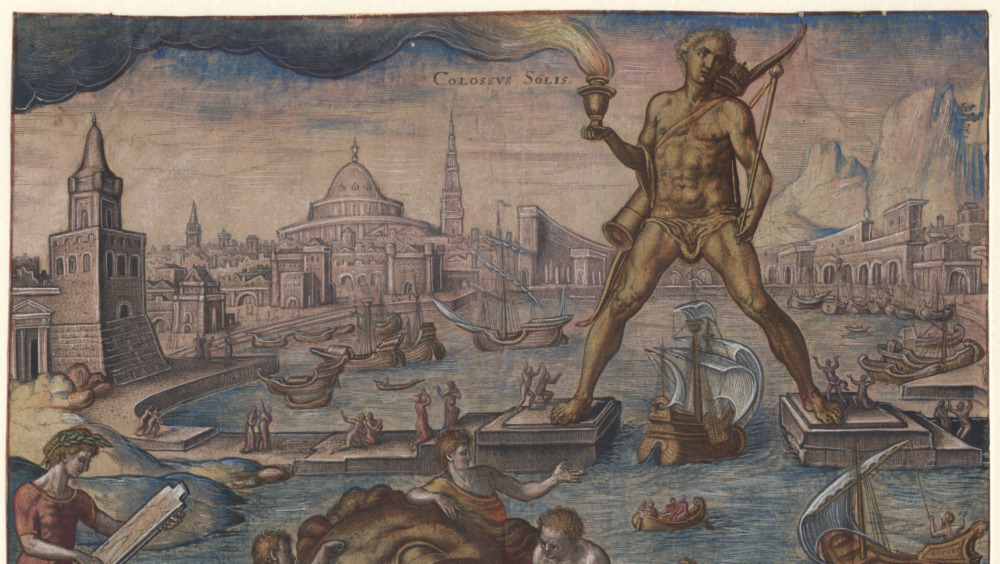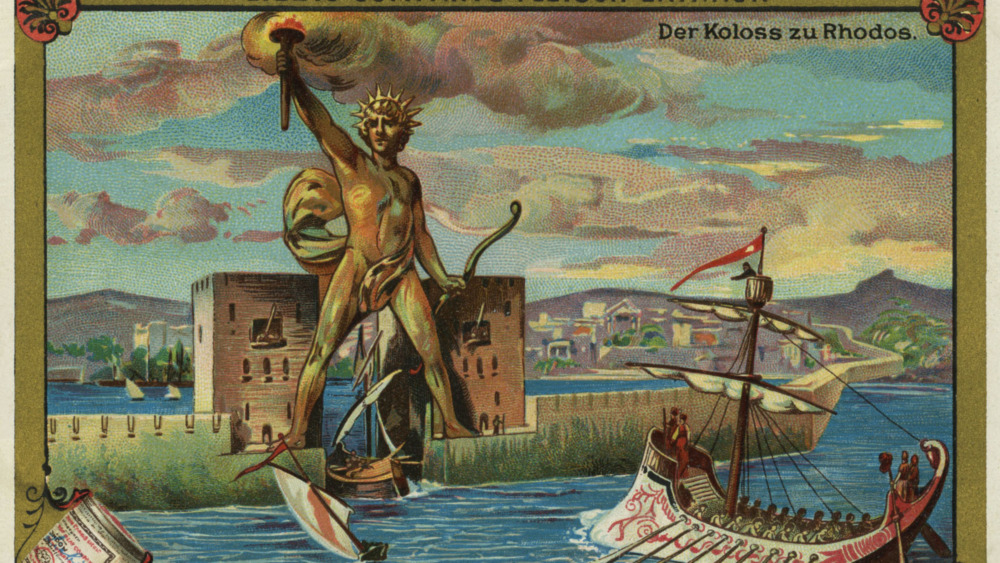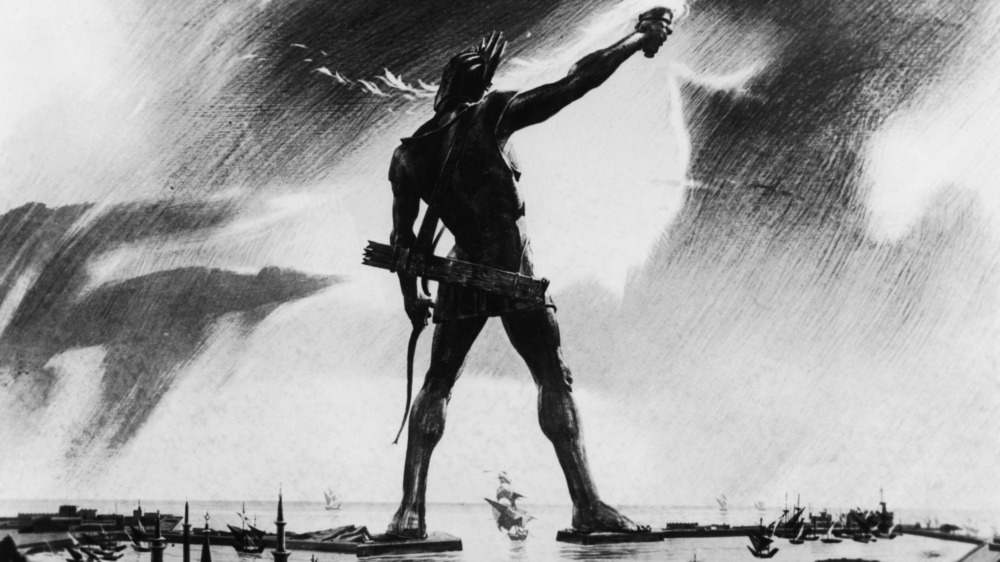What You Need To Know About The Colossus Of Rhodes
Like most of the Seven Wonders of the Ancient World, much of what we know about the Colossus of Rhodes is up to speculation. Some, like the Hanging Gardens of Babylon, are on the list of famous places that may never have existed. In fact, the only ancient wonder for which we have empirical evidence is the Great Pyramid of Giza, which may or may not have been built by aliens. (Totally built by aliens.)
According to History.com, the Colossus of Rhodes was a huge statue towering as high as 110 feet tall on a 50-foot plinth over the port city of Rhodes on the Greek island of the same name. The statue represented the sun god Helios, and was erected to celebrate the Rhodians' victory over the Macedonian forces that besieged the city in 305 B.C. Wondrous as it was, the Colossus had a rather short life. Completed sometime around 280 B.C., it came tumbling down during an earthquake in 226 B.C. Since the statue has now been lost to history, much of what is "known" about it has been filled in with imagination. Let's take a look at what happened to the Colossus of Rhodes and see if we can tell the fact from fiction.
What happened to the Colossus of Rhodes?
According to National Geographic, much of the information we have on the Colossus of Rhodes comes from a treatise written by an engineer from the second century B.C. named Philo of Byzantium. His On the Seven Wonders of the World states that the statue was made of 12 to 13 tons of bronze. The sculptor behind the gigantic statue was named Chares of Lindos. Philo wrote that he would build a section of the statue, then pile up dirt around it like scaffolding and build another level. How he knew this, however, is unclear, as he was writing over a century after the Colossus was built and he didn't cite his sources.
After the earthquake brought the Colossus down, Egypt's Ptolemy III Euergetes, a pharaoh allied with Rhodes, offered to pay for its reconstruction, but the Rhodians claimed that an oracle had told them not to rebuild. So the pieces simply stayed where they had fallen for centuries, and they would still be there today had it not been for Muawiyah, a general of the Umayyad Muslims who conquered Rhodes in A.D. 654. After taking the city, he ordered the pieces to be hauled away to Syria, where a scrap merchant bought them up. He reportedly employed over 900 camels to transport them all.
The Colossus of Rhodes didn't actually straddle the entrance to the port of Rhodes
Centuries later, people began to believe that the Colossus of Rhodes had spectacularly straddled the entrance to the city's port, a truly impressive stance that would warrant its place among the world's wonders. However, as Nat Geo notes, this was a part of the statue's story that came from people's imagination. The idea arose around the late 16th century, when Dutch engravings bearing the Colossus straddling the port became popular.
It was a cool idea, but unfortunately it would have been physically impossible. The statue measuring just over 100 feet tall would not have been able to stand, as the entrance to the port measures 650 feet across. Forget earthquakes. Such a structure wouldn't have even withstood the winds coming in off the sea. Still, the idea that ships sailed between Helios' legs as they came to port at Rhodes lasted for nearly four centuries, until historians called BS on the idea sometime in the 19th century.


